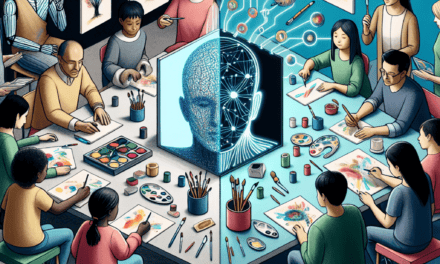Data Science Overview: NLP and Integrating Electronic Health Data

In the rapidly evolving field of data science, two areas have emerged as particularly transformative: Natural Language Processing (NLP) and the integration of electronic health data. These technologies are reshaping industries, particularly healthcare, by enabling more sophisticated data analysis and decision-making processes. This article delves into the intricacies of NLP and electronic health data integration, exploring their applications, challenges, and future potential.
Understanding Natural Language Processing (NLP)
Natural Language Processing (NLP) is a subfield of artificial intelligence that focuses on the interaction between computers and humans through natural language. The ultimate objective of NLP is to read, decipher, understand, and make sense of human languages in a valuable way. As a cornerstone of data science, NLP is crucial for processing and analyzing large amounts of natural language data.
The Basics of NLP
NLP combines computational linguistics with machine learning and deep learning models to process and analyze language data. It involves several key tasks, including tokenization, parsing, sentiment analysis, and machine translation. Tokenization is the process of breaking down text into smaller units, such as words or phrases, which can then be analyzed. Parsing involves analyzing the grammatical structure of a sentence to understand its meaning.
Sentiment analysis is another critical task in NLP, where the goal is to determine the sentiment expressed in a piece of text, whether positive, negative, or neutral. This is particularly useful in areas like social media monitoring and customer feedback analysis. Machine translation, on the other hand, involves automatically translating text from one language to another, a task that has seen significant advancements with the advent of neural networks.
Applications of NLP in Healthcare
In healthcare, NLP is used to extract meaningful information from unstructured data sources, such as clinical notes, research articles, and patient feedback. This information can be used to improve patient care, streamline operations, and enhance research capabilities. For instance, NLP can help in identifying patient symptoms and correlating them with potential diagnoses, thus aiding in faster and more accurate medical decision-making.
Moreover, NLP is instrumental in developing virtual health assistants and chatbots that can provide patients with immediate responses to their queries, schedule appointments, and offer medication reminders. These applications not only improve patient engagement but also reduce the burden on healthcare professionals.
Challenges in NLP
Despite its potential, NLP faces several challenges, particularly in the healthcare sector. One of the primary challenges is the complexity and variability of human language. Medical terminology, for instance, can be highly specialized and context-dependent, making it difficult for NLP models to accurately interpret and analyze.
Another challenge is the need for large, high-quality datasets to train NLP models. In healthcare, data privacy and security concerns can limit access to such datasets, hindering the development and deployment of effective NLP solutions. Additionally, the integration of NLP systems with existing healthcare IT infrastructure can be complex and resource-intensive.
Case Studies in NLP
Several case studies highlight the successful application of NLP in healthcare. For example, the Mayo Clinic has implemented NLP to analyze clinical notes and identify patients eligible for clinical trials. This has significantly increased the efficiency of patient recruitment and improved the quality of clinical research.
Another notable example is IBM Watson Health, which uses NLP to process vast amounts of medical literature and provide evidence-based treatment recommendations. This has been particularly beneficial in oncology, where staying updated with the latest research is crucial for effective treatment planning.
The Future of NLP in Data Science
The future of NLP in data science looks promising, with ongoing advancements in machine learning and artificial intelligence driving its evolution. The development of more sophisticated models, such as transformers and BERT (Bidirectional Encoder Representations from Transformers), has significantly improved the accuracy and efficiency of NLP tasks.
As these technologies continue to evolve, we can expect NLP to play an increasingly important role in healthcare, enabling more personalized and precise medical care. Furthermore, the integration of NLP with other data science technologies, such as predictive analytics and big data, will open up new possibilities for innovation and improvement in healthcare delivery.
Integrating Electronic Health Data
Electronic health data integration involves the consolidation of health-related information from various sources into a unified system. This integration is crucial for improving healthcare delivery, enhancing patient outcomes, and facilitating research and innovation. However, it also presents several challenges that need to be addressed to realize its full potential.
The Importance of Electronic Health Data
Electronic health data encompasses a wide range of information, including patient demographics, medical histories, laboratory results, and treatment plans. This data is typically stored in electronic health records (EHRs), which provide a comprehensive view of a patient’s health status and history.
The integration of electronic health data is essential for several reasons. Firstly, it enables healthcare providers to access complete and up-to-date patient information, which is crucial for making informed clinical decisions. Secondly, it facilitates care coordination among different healthcare providers, ensuring that patients receive consistent and continuous care. Finally, integrated health data supports research and innovation by providing a rich source of information for analyzing health trends and outcomes.
Challenges in Data Integration
Despite its benefits, integrating electronic health data is fraught with challenges. One of the primary challenges is data interoperability, which refers to the ability of different systems and applications to exchange and use data effectively. In healthcare, interoperability is often hindered by the use of different data standards and formats, making it difficult to integrate data from disparate sources.
Data privacy and security are also significant concerns in health data integration. Healthcare data is highly sensitive, and any breach can have severe consequences for patients and healthcare providers. Ensuring the security and confidentiality of health data is therefore paramount in any integration effort.
Additionally, the integration of electronic health data requires significant investment in technology and infrastructure. Many healthcare organizations may lack the resources or expertise to implement and maintain integrated data systems, posing a barrier to widespread adoption.
Strategies for Successful Data Integration
To overcome these challenges, several strategies can be employed to facilitate successful electronic health data integration. One such strategy is the adoption of standardized data formats and protocols, such as HL7 (Health Level Seven) and FHIR (Fast Healthcare Interoperability Resources). These standards promote interoperability by providing a common framework for data exchange.
Another strategy is the use of data integration platforms and tools that can automate the process of data consolidation and ensure data consistency and accuracy. These tools can also provide advanced analytics capabilities, enabling healthcare providers to derive actionable insights from integrated data.
Collaboration among stakeholders, including healthcare providers, technology vendors, and regulatory bodies, is also crucial for successful data integration. By working together, these stakeholders can address common challenges and develop solutions that meet the needs of the healthcare industry.
Case Studies in Data Integration
Several case studies demonstrate the successful integration of electronic health data. For instance, the Veterans Health Administration (VHA) in the United States has implemented an integrated EHR system that consolidates data from multiple sources, providing a comprehensive view of each veteran’s health status. This system has improved care coordination and patient outcomes across the VHA network.
Another example is the Health Information Exchange (HIE) initiatives in various states, which aim to facilitate the secure exchange of health information among healthcare providers. These initiatives have improved data accessibility and interoperability, enabling more efficient and effective healthcare delivery.
The Future of Electronic Health Data Integration
The future of electronic health data integration is promising, with ongoing advancements in technology and data science driving its evolution. The development of more sophisticated data integration platforms and tools will enable healthcare providers to consolidate and analyze data more efficiently and effectively.
Moreover, the increasing adoption of cloud computing and big data technologies will facilitate the storage and processing of large volumes of health data, enabling more comprehensive and accurate analysis. As these technologies continue to evolve, we can expect electronic health data integration to play an increasingly important role in healthcare delivery and innovation.
Combining NLP and Electronic Health Data
The integration of NLP with electronic health data presents a powerful opportunity to enhance healthcare delivery and research. By combining these technologies, healthcare providers can extract valuable insights from unstructured data sources, such as clinical notes and patient feedback, and integrate them with structured health data to improve decision-making and patient outcomes.
Applications of Combined Technologies
One of the primary applications of combining NLP with electronic health data is in clinical decision support systems (CDSS). These systems use NLP to analyze unstructured data, such as clinical notes and research articles, and integrate it with structured health data to provide evidence-based treatment recommendations. This can improve the accuracy and efficiency of clinical decision-making, leading to better patient outcomes.
Another application is in population health management, where NLP can be used to analyze large volumes of health data to identify trends and patterns. This information can be used to develop targeted interventions and preventive measures, improving the overall health of populations.
Challenges in Combining Technologies
Despite its potential, combining NLP with electronic health data presents several challenges. One of the primary challenges is data quality and consistency. Unstructured data, such as clinical notes, can be highly variable and may contain errors or inconsistencies that can affect the accuracy of NLP analysis.
Another challenge is the integration of NLP systems with existing healthcare IT infrastructure. This can be complex and resource-intensive, requiring significant investment in technology and expertise. Additionally, ensuring the security and confidentiality of health data is crucial, as any breach can have severe consequences for patients and healthcare providers.
Strategies for Successful Integration
To overcome these challenges, several strategies can be employed to facilitate the successful integration of NLP with electronic health data. One such strategy is the use of advanced machine learning and deep learning models that can improve the accuracy and efficiency of NLP analysis. These models can be trained on large, high-quality datasets to ensure accurate and reliable results.
Another strategy is the use of data integration platforms and tools that can automate the process of data consolidation and ensure data consistency and accuracy. These tools can also provide advanced analytics capabilities, enabling healthcare providers to derive actionable insights from integrated data.
Collaboration among stakeholders, including healthcare providers, technology vendors, and regulatory bodies, is also crucial for successful integration. By working together, these stakeholders can address common challenges and develop solutions that meet the needs of the healthcare industry.
Case Studies in Combined Technologies
Several case studies demonstrate the successful integration of NLP with electronic health data. For instance, the University of California, San Francisco (UCSF) has implemented an NLP-based system that analyzes clinical notes to identify patients at risk of sepsis. This system has improved the early detection and treatment of sepsis, leading to better patient outcomes.
Another example is the use of NLP in the analysis of patient feedback at the Cleveland Clinic. By analyzing unstructured data from patient surveys and feedback forms, the clinic has been able to identify areas for improvement and enhance patient satisfaction.
The Future of Combined Technologies
The future of combining NLP with electronic health data is promising, with ongoing advancements in technology and data science driving its evolution. The development of more sophisticated NLP models and data integration platforms will enable healthcare providers to extract valuable insights from unstructured data sources and integrate them with structured health data more efficiently and effectively.
As these technologies continue to evolve, we can expect the integration of NLP with electronic health data to play an increasingly important role in healthcare delivery and innovation. This will enable more personalized and precise medical care, improving patient outcomes and enhancing the overall quality of healthcare.
Conclusion
In conclusion, Natural Language Processing (NLP) and the integration of electronic health data are two transformative areas in data science that are reshaping the healthcare industry. NLP enables the extraction of valuable insights from unstructured data sources, while electronic health data integration facilitates the consolidation and analysis of health-related information from various sources.
Despite the challenges associated with these technologies, such as data quality and interoperability issues, their potential benefits are significant. By combining NLP with electronic health data, healthcare providers can improve clinical decision-making, enhance patient outcomes, and drive innovation in healthcare delivery.
As technology continues to evolve, we can expect these technologies to play an increasingly important role in healthcare, enabling more personalized and precise medical care. By addressing the challenges and leveraging the opportunities presented by NLP and electronic health data integration, the healthcare industry can continue to improve and innovate, ultimately benefiting patients and providers alike.




